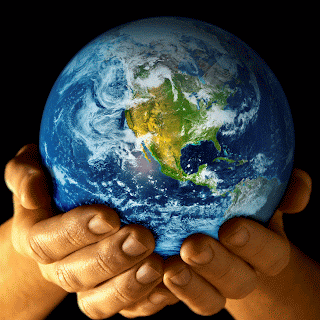The News And Analysis Of Events You Ever Wanted To Know About And On Hyderabad And Andhra Pradesh. Also A Window On Maoists and Terror Networks.
Saturday, 31 July 2010
Dirtiest places on Earth in Andhra : Clean up a big challenge?
By U Sudhakar Reddy
With concerns about polluted environments growing and the Centre identifying several industrial clusters across the country that pose an unacceptably high risk to human health, cleaning up some of the worst areas is a big challenge for the authorities. The Centre has identified five industrials clusters - Vishakapatnam, Patan-cheru-Bollarum, Katedan, Kukatpally, and Vijayawada - to be highly polluted in the state and at least 20 major lakes in Hyderabad are in the category of most contaminated sites.
The Centre has sanctioned a two-year pilot project funded by the World Bank for two areas, Noor Mohammed Kunta lake in Hyderabad and Ukkayapalli in Kadapa. The Environment and Social Assessment study conducted in these areas with the assistance of the ministry of environment has revealed some shocking facts.
Lakes, industrial cluster areas, municipal dumping yards, and bio-medical waste sites are considered to be the dirtiest places. Environmentalists and health experts say it is not an easy task to clean up highly polluted areas as the ground and surface water are highly contaminated as is the soil.
Quantities of hazardous wastes are illegally dumped outside industrial estates, on abandoned public lands, and within privately owned lands. There are no estimates available with the State Pollution Control Board regarding the quantity and nature of the hazardous wastes in such dumps.
The AP Pollution Control Board (APPCB) has dug up the health records of people living around NM Kunta lake and five others inter-connected lakes including Mir Alam Tank situated in and around the Katedan Industrial Area in Rajendranagar. The records show that people living around these areas suffer from air pollution related health problems. Asthma, difficulty in breathing and vomiting are often experienced and get worse during the rainy season.
Mr A. Muralidhar, a resident of Katedan says, “The foul smell intensifies during the evening hours after 7 pm every day and the worst time is the rainy season.” Of the 600 industrial units in Katedan, 16 per cent are lead extraction units, 13 per cent are oil refining, 10 per cent are cement industries and 8 per cent are textile industries. None of these industries has their own effluent treatment plant and instead discharge untreated effluents into the NM Kunta lake.
Both surface and ground water quality has deteriorated due to discharge of untreated industrial effluents. Total Dissolve Solids (TDS) in the ground water sample was 2,924 to 3,280 mg per litre, way above the permissible limit of 2,000 mg/l. The hardness of the ground water sample was also significantly higher than the desirable limit of 300 mg/l and the permissible limit of 500 mg/l. Chlorides and sulphates in the ground water were also in excess of the desired limits. The APPCB found various heavy metals in the lake water. Cadmium concentration exceeded desirable limits and lead and copper levels too were high.
Borewell water in the monsoon season showed significant concentration of lead and soil samples showed high levels of heavy metals. Industrial units in Katedan generate more than 200 MT of solid waste every month out of which 70 MT or 37 per cent is hazardous solid waste. Around 14 per cent of people still depend on borewell, water which exposes them to significant health risks from all these pollutants.
The APPCB senior engineer, Mr N.V. Bhaskar Rao, claims that the Board has stopped the source of pollution at Noor Mohammed Kunta. “The textile industries are responsible for the heavy pollution at NM Kunta which we have closed down. Now we are working on remedies,” he said.
Dr S. Krishna of Netaji Nagar says that skin diseases are the major problem for people living near the lake. Diarrhoea, jaundice and asthma are very common. Dr Sitaram of Sriramnagar has treated several cases of hepatitis-B, dysentery, typhoid, malaria and asthma, which increases during the rainy season.
Doctors say it is essential to stop the burning of solid waste, and supply safe piped drinking water to all residents. The project to be taken up with World Bank funds is expected to provide a blueprint for how all such projects should be handled to ensure environmental and social sustainability
Subscribe to:
Post Comments (Atom)

No comments:
Post a Comment